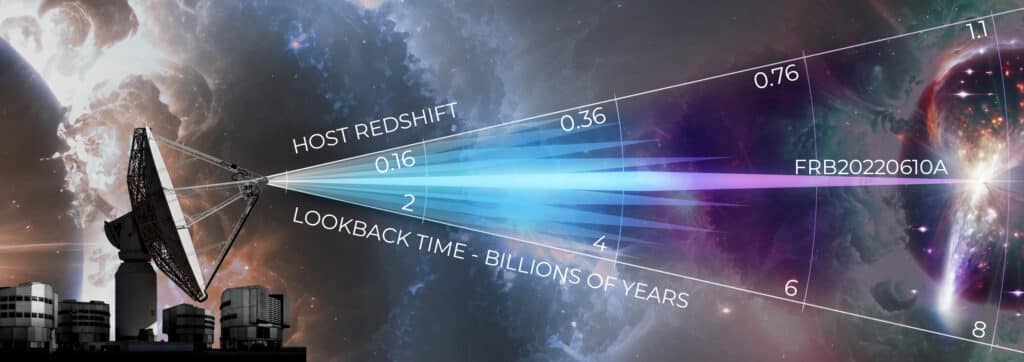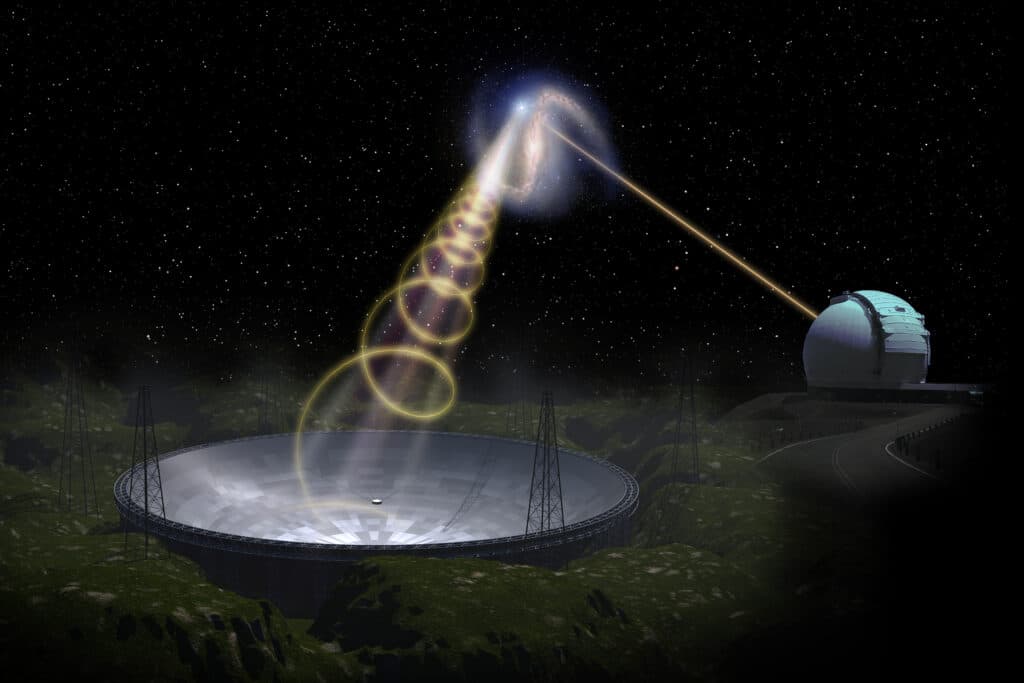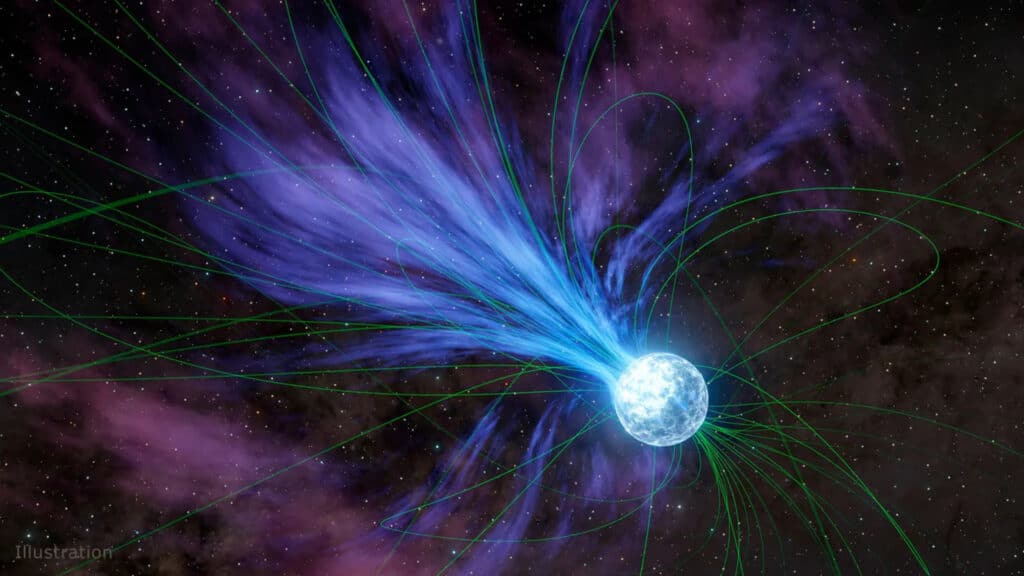Mysterious deep space signals has left the scientific community stumped, but astronomers believe they might have found one answer to the question. NASA’s X-ray telescopes have offered scientists a rare glimpse into the enigmatic behavior of a dead star, capturing a bright burst of radio waves that sheds new light on one of space’s most perplexing phenomena. This significant discovery, involving two of the agency’s sophisticated telescopes, NICER and NuSTAR, marks a pivotal moment in the quest to understand the origins of fast radio bursts, intense flashes of radio waves emanating from deep space.
Fast radio bursts, though fleeting, pack an enormous punch, releasing in just a fraction of a second about as much energy as the Sun does over an entire year. These bursts are distinguished by their laserlike beam of light, setting them apart from other, more chaotic cosmic explosions. The mystery surrounding their origins has puzzled astronomers for years, largely because their ephemeral nature makes it challenging to trace them back to their sources.

The breakthrough came when a fast radio burst was detected in October 2022 from a magnetar within our own galaxy — a rare occurrence that provided an unparalleled opportunity for study. Magnetars are the dense remnants of exploded stars, so compact that a teaspoon of their material would weigh about a billion tons on Earth. The magnetar in question, known as SGR 1935+2154, exhibited a fast radio burst between two “glitches,” moments when it suddenly started spinning faster, then slowed down at an unprecedented rate.
“Typically, when glitches happen, it takes the magnetar weeks or months to get back to its normal speed,” says study lead author Chin-Ping Hu, an astrophysicist at National Changhua University of Education in Taiwan, in a media release. “So clearly things are happening with these objects on much shorter time scales than we previously thought, and that might be related to how fast radio bursts are generated.”
Astronomers suggest that the surface and interior dynamics of magnetars play a critical role in the generation of fast radio bursts. They hypothesize that a glitch in the magnetar’s surface, possibly causing a crack, could release material into space, akin to a volcanic eruption. This loss of mass could explain the magnetar’s rapid deceleration observed during the study.
However, the exact mechanisms behind the production of fast radio bursts remain elusive.
“All those X-ray bursts that happened before this glitch would have had, in principle, enough energy to create a fast radio burst, but they didn’t,” notes study co-author Zorawar Wadiasingh, a research scientist at the University of Maryland and NASA’s Goddard Space Flight Center. “So it seems like something changed during the slowdown period, creating the right set of conditions.”
Researchers believe that the interaction between the magnetar’s solid exterior and its superfluid interior, leading to energy transfer and possibly surface cracks, could be a contributing factor.

Despite this significant advance in understanding, the team acknowledges that more data is needed to fully unravel the mystery of fast radio bursts.
“We’ve unquestionably observed something important for our understanding of fast radio bursts,” concludes George Younes, a researcher at Goddard and a member of the NICER science team specializing in magnetars. “But I think we still need a lot more data to complete the mystery.”
This research not only brings us closer to deciphering the origins of fast radio bursts but also underscores the importance of NASA’s telescopes in following up on short-lived events in the cosmos, providing invaluable insights into the most extreme conditions in the universe.












